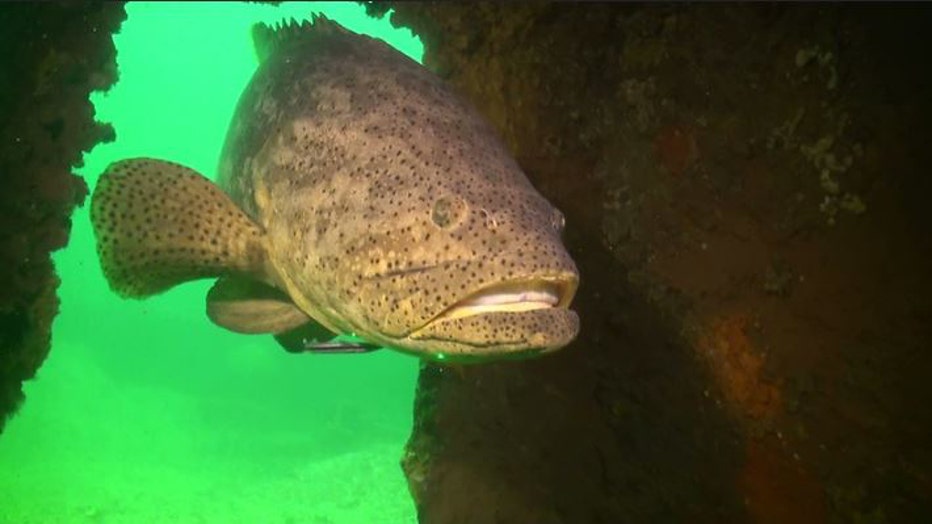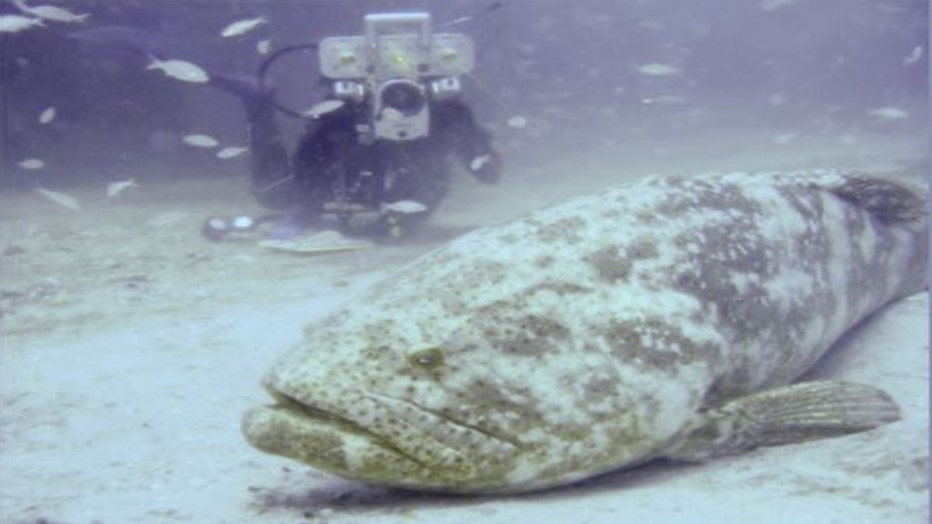State backs limited fishing of goliath grouper
FWC photo by Angela Collins
TALLAHASSEE, Fla. - Three decades after the state banned the harvesting of goliath grouper, the Florida Fish and Wildlife Conservation Commission approved plans Wednesday that would allow about 200 of the fish to be killed annually.
Over the objections of dive operators, the commission voted to move forward with a draft rule allowing up to 200 fishing permits a year for juvenile goliath grouper, with the first harvest expected in 2023.
Commissioner Robert Spottswood said the "limited" harvest should help the agency better determine the overall stock of the fish in the next three to five years.
"This stock is rebuilding," Spottswood said. "We're hearing that it can easily sustain this very small harvest of fish. We're going to learn something from it. And more importantly, we're going to give some access that we can give safely and sustainably back to the stakeholders that own the resource. And I believe it's time we do so."
Under the plans, applicants would have to pay $10 to enter a lottery from which names would be drawn for $500 fishing permits. Each angler would be limited to one goliath grouper per permit.
Jessica McCawley, director of the commission’s Division of Marine Fisheries Management, said the cost of the permits takes into account hiring a company to conduct the lottery, along with staff time to run the program.
Commissioner Gary Nicklaus said, in supporting the permit cost, that any revenue should be used for goliath grouper research.

Courtesy: Florida Fish and Wildlife
PREVIOUS: Father, sons reel in over 2,000 pounds of Goliath grouper: 'The catch of a lifetime'
Fishing for goliath grouper would run annually from March 1 through May 31 in state waters outside of Southeast Florida. The fishing would be prohibited from Martin County south through the Atlantic coast of Monroe County.
Dive operators begged commissioners to keep the juvenile grouper from being caught, saying tourists travel to Florida to see and photograph the fish.
Donna Askew, a dive operator from Jupiter, told the commission that her business put 479 divers into waters in the past few weeks to see goliath grouper.
"They'll come in, they'll spend the weekend diving with us, do the goliath trips that we have, and then on Monday they're going to Disney. They're going to SeaWorld," Askew said.
"It's not just us that's going to be affected," Askew continued. "I mean, we’re just one small dive operation out of many that are running these trips."
Bob Harris, representing the Diving Equipment & Marketing Association, cautioned that allowing the harvest will result in more than the 200 goliath grouper being killed and said keeping some waters off limits won’t help the species.
"If you vote to allow a harvest, people are going to go kill this fish because they think the agency that's responsible for determining what species can be allowed to be harvested have said there's enough to allow a harvest, so it must be OK," Harris said. "And your boats and your people cannot be everywhere."
Never listed as endangered, goliath grouper was removed from National Oceanic and Atmospheric Administration’s species of special concern list in 2006 and had its listing improved from "critically endangered" to "vulnerable" in 2018 by the independent International Union for the Conservation of Nature.
The state ban was put in place in 1990.

Courtesy: Florida Fish and Wildlife
RELATED: Giant grouper capsizes boat
Goliath grouper, which can grow to 800 pounds and more than 8 feet in length, had been harvested in state waters since the late 1800s.
Aside from overfishing, the species is susceptible to dying because of such factors as cold temperatures and red tide blooms.
The harvest would limit the catch to juvenile fish between 20 inches and 36 inches in length.
Supporters of the harvest questioned the size limits and the permit cost as potentially being too high for some recreational anglers.
"This is a very, very small amount of fish compared to what's out there," said recreational angler Bill George. "I do have a little bit of concerns about the 36-inch max size limit. If you're going to charge somebody $500 to catch goliath, it ought to be bigger than the minimum size of a cobia."
Zac Sturm, a recreational angler from Tampa, said a harvest will protect other reef species that are being consumed by goliath grouper.
"We have multiple species that are being depleted as these fish continue to grow because they really are an apex predator," Strum said.

